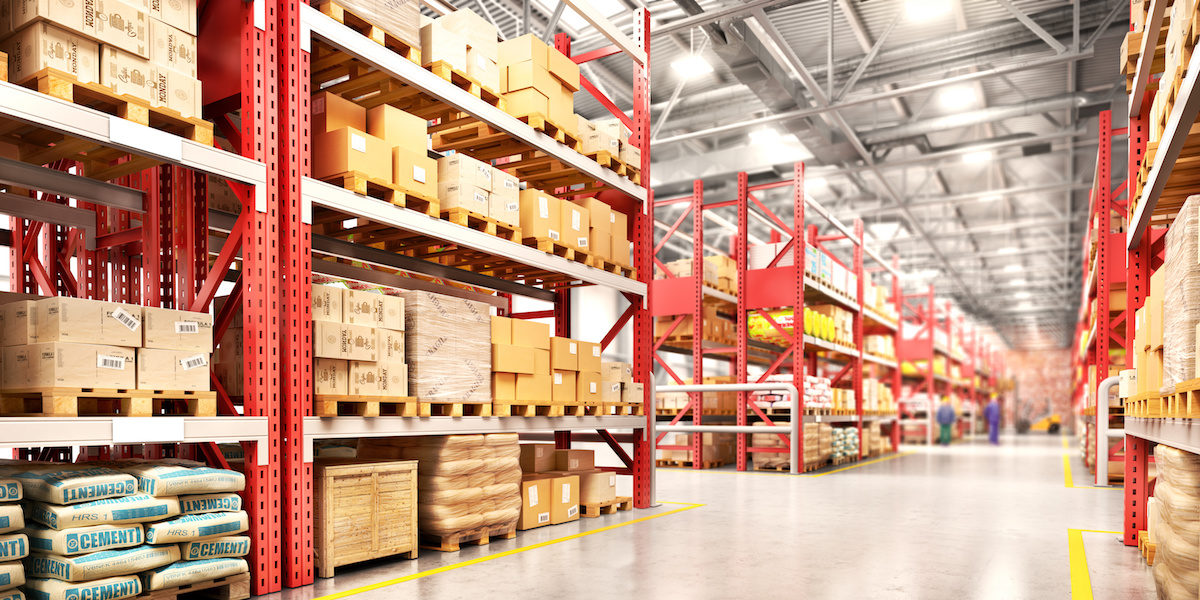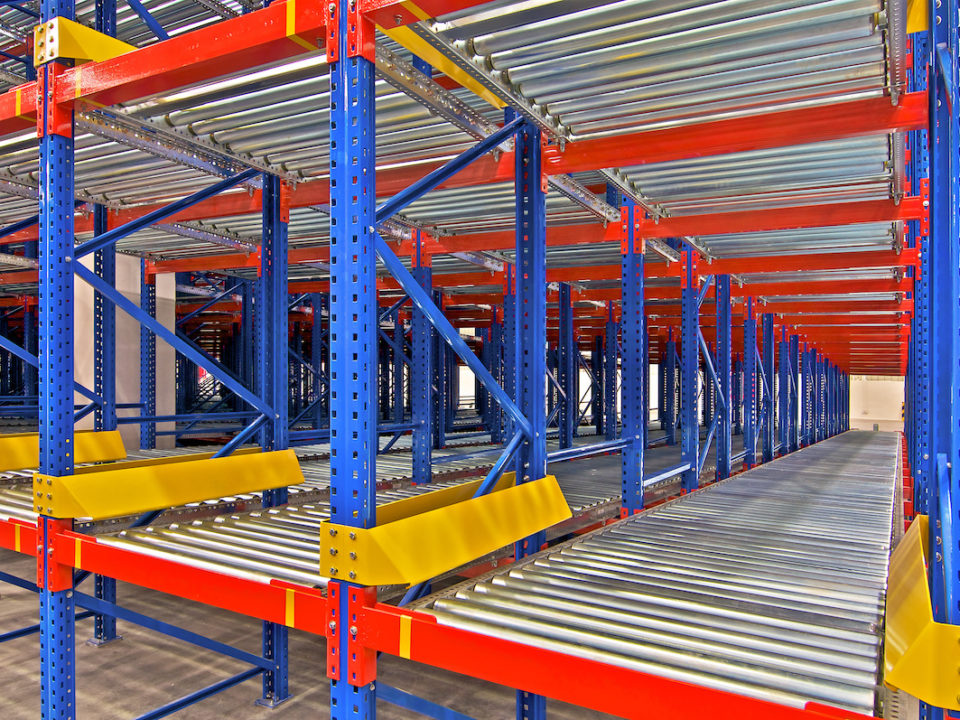Should You Replace or Repair a Pallet Rack?

In an active warehouse environment, pallet rack damage occurs and you will be faced with the decision to replace or repair your pallet racking system or parts of it. With consistent safety protocols in place, you will prevent or minimize damage to your racks. With a frequent in-house inspection either by a professional inspector or someone in your organization, you will be able to find signs of damage early.
Here is what to look for during the inspections:
Are the pallet racks straight and plumb?
Rack Manufactures Institute (RMI) says that “a pallet rack column that is leaning (out-of-plumb) or bowed (out-of-straight) beyond a certain point will have a significantly reduced capacity, making it unsafe and at risk of collapse. RMI defines the severity of these two conditions as follows:
– Out-of-Plumb Ratio – Maximum horizontal distance (inches or millimeters) from the centerline of the column at the floor to a plumb line that extends downward from the centerline of the column at the top shelf elevation divided by the vertical distance (feet or meters) from the floor to the top shelf elevation.
– Out-of-Straight Ratio – Maximum horizontal distance (inches or millimeters) from the centerline at any point on the column to a plumb line from any other point on the column divided by the vertical distance (feet or meters) between the two points.
The higher the ratio, the more likely a rack is to fail. Recognizing this, MHI’s ANSI MH16.1-2012: Specification for the Design, Testing and Utilization of Industrial Steel Storage Racks section 1.4.11 limits the ratio for both out-of-plumb (leaning) and out-of-straight (bowing) loaded rack columns to 1/240. This equates to 0.05-inch per 1 foot of height (1.25 millimeters per 0.3-meter), or 0.5-inch per 10 feet (12.5 millimeters per 3 meters) of height”.
Overloaded racks?
This can not always be determined at a glance, but if your beams show a large amount of deflection, that’s a sign your pallet racking system is overloaded, and you should call for a professional inspection right away. (A certain amount of deflection is acceptable, but should disappear when you unload the beams.)
Are the beams damaged or insecure?
Look for dents, dings, and scrapes that could indicate forklift damage. Inspect the connections a to make sure the beams are seated properly. Ensure that are beams still correctly attached with the correct hardware. Look for damaged or missing bolts, clips, or safety pins, and tighten any loose ones.
Are the uprights or bracing bent or damaged?
Look for paint scrapes that could indicate a forklift impact. Check the baseplates to make sure they are securely anchored to the floor. Check the horizontal braces for bending or twisting (bent bracing can be sign of overloading). Don’t forget to check for damage to your rack protection products if you have them. If you find damage there, then make sure the incident that damaged the rack protectors didn’t damage the rack as well. (Be sure to remove and replace damaged rack protectors.)
Do you see any rust?
Rust is often the result of very moist environments. If allowed to go too far, it can weaken the metal. Rust or corrosion can also be a sign that paint was scraped off as the result of a forklift impact.
Repair or replace?
When racks are damaged (or improperly repaired), the load-carrying capacity of the structure may be reduced. And while just one accident might not result in failure, accumulated damage can ultimately lead to pallet rack failure.
Since pallet rack damage can be detrimental to your business and a serious safety hazard, it’s important that you inspect your rack regularly. Whether you need to repair your pallet rack or replace it depends on the scope of the damage. There are things you need to check when you inspect your system, and adjustments you can make to keep your warehouse working smoothly and safely.
What to inspect regularly:
- Are the racks level?
- Is anything rusted or corroded?
- Are the racks overloaded?
- Are the uprights bent or damaged?
- If the column protectors are damaged, replace them and check underneath to see if the rack is still intact.
- Are the beams still correctly attached with all of the correct hardware?
- Are the beams bent or damaged?
What are the advantages to repairing your pallet rack vs. replacing it?
- Often pallet rack can be repaired without unloading the inventory.
- It’s less of a disruption to warehouse operations than unloading and installing new parts.
- If the damage is in the middle of a row it would be easier to repair it instead of unloading the entire row and replacing it.
- If the damage is all similar and at the same height, you can use the same pallet rack repair kit.
- If your uprights are very tall, it would be less expensive to repair them than it would be to buy new ones and ship them.
When should you replace your pallet rack?
- If there is a lot of damage front and back of the rack.
- If there is a lot of different damage at different places and heights.
- If your uprights aren’t too tall or custom, it is usually cheaper to replace it.
- If you are moving to a new facility, it makes more sense to get new rack than to tear down and repair existing pallet rack.
At a minimum, you should inspect your pallet rack annually, but more often than that is better. You should immediately check it if you see signs of visible damage or if there has been a collision or other incident with the uprights or beams.
Versatile Industrial Maintenance Inc. was established in 2006 in Lawrenceville, GA and draws on over 40 years of manufacturing and facility maintenance experience with a high emphasis on regulatory and safety. VIM specializes in warehouse rack repairs. Contact us for a free consultation via email or call 404-516-0611



